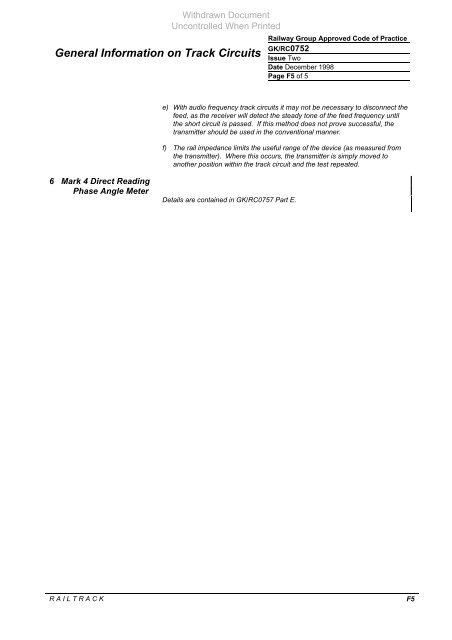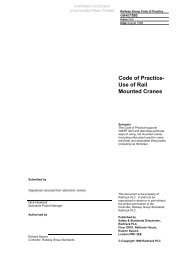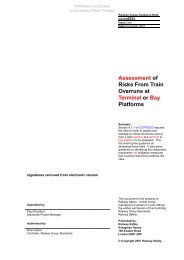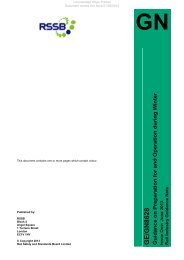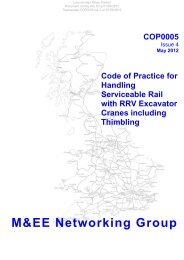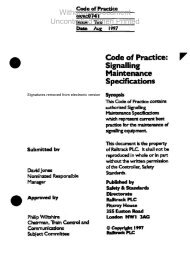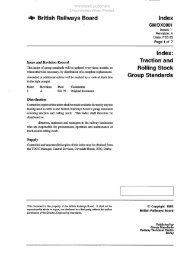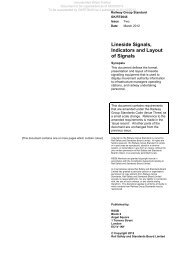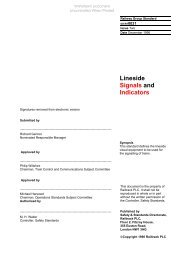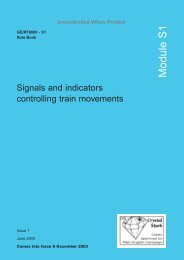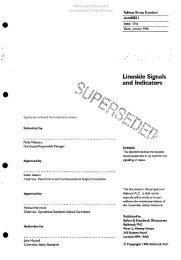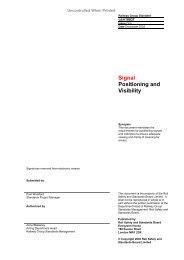General Information on Track Circuits - RGS Online
General Information on Track Circuits - RGS Online
General Information on Track Circuits - RGS Online
Create successful ePaper yourself
Turn your PDF publications into a flip-book with our unique Google optimized e-Paper software.
<str<strong>on</strong>g>General</str<strong>on</strong>g> <str<strong>on</strong>g>Informati<strong>on</strong></str<strong>on</strong>g> <strong>on</strong> <strong>Track</strong> <strong>Circuits</strong><br />
6 Mark 4 Direct Reading<br />
Phase Angle Meter<br />
Withdrawn Document<br />
Unc<strong>on</strong>trolled When Printed<br />
Railway Group Approved Code of Practice<br />
GK/RC0752<br />
Issue Two<br />
Date December 1998<br />
Page F5 of 5<br />
e) With audio frequency track circuits it may not be necessary to disc<strong>on</strong>nect the<br />
feed, as the receiver will detect the steady t<strong>on</strong>e of the feed frequency until<br />
the short circuit is passed. If this method does not prove successful, the<br />
transmitter should be used in the c<strong>on</strong>venti<strong>on</strong>al manner.<br />
f) The rail impedance limits the useful range of the device (as measured from<br />
the transmitter). Where this occurs, the transmitter is simply moved to<br />
another positi<strong>on</strong> within the track circuit and the test repeated.<br />
Details are c<strong>on</strong>tained in GK/RC0757 Part E.<br />
R A I L T R A C K F5


